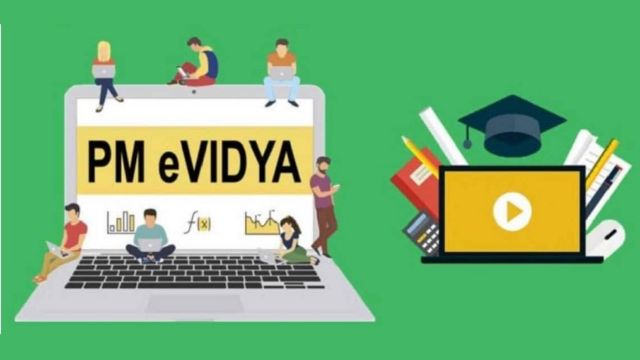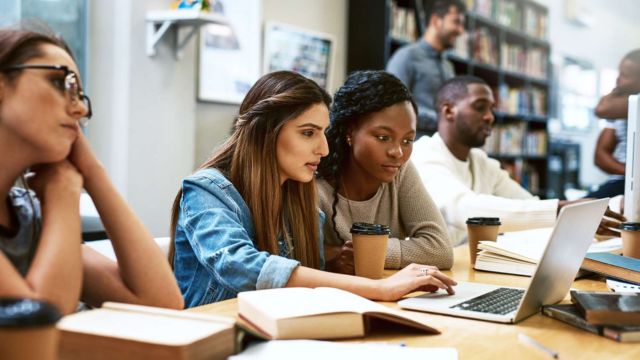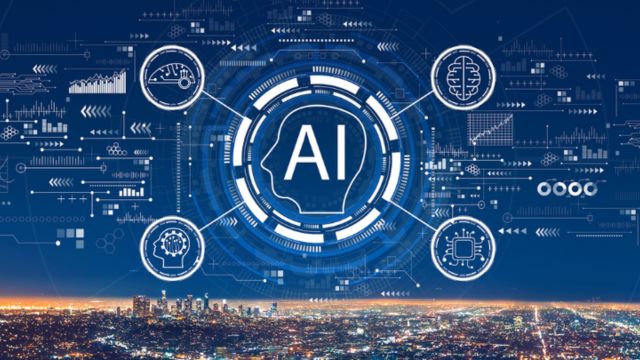The Ministry of Education (MoE), Government of India, inaugurated the ground-breaking PM eVIDYA program in May 2020 as a component of the Atmanirbhar Bharat Abhiyan. It was created to coordinate digital education initiatives nationwide and is essential in enabling rural students, including those in India’s most isolated regions, to access inclusive, technology-driven education.
In a time when empowerment and progress depend on digital literacy, PM eVIDYA is a shining example of egalitarian education, bridging the gap between urban and rural areas by utilising a variety of media, including radio, television, and internet portals.
What Is PM eVIDYA?

The Ministry of Education (formerly MHRD) established PM eVIDYA as an umbrella program to unify all digital and broadcast-based learning programs nationwide. It employs a multimodal strategy to guarantee that students can obtain high-quality education regardless of their location or socioeconomic background.
The following are the main elements of PM eVIDYA:
- platform known as DIKSHA (Digital Infrastructure for Knowledge Sharing)
- One Class, One Channel: SWAYAM PRABHA offers 12 TV channels for students in grades 1 through 12.
- Digital textbooks for educators and learners are available through ePathshala.
- Education via podcasts and radio (via AIR & CBSE-Shiksha Vani)
- E-content specifically designed for children with disabilities
The Importance of PM eVIDYA in Addressing the Digital Divide in Rural India
Rural students faced many obstacles before the COVID-19 outbreak, such as limited access to qualified instructors, good study materials, the internet, and even basic infrastructure. The digital divide was further highlighted by the abrupt switch to online learning during lockdowns.
Through the use of low-tech, high-impact delivery channels including radio, television, and offline apps, PM eVIDYA stepped in to democratise access to education.
Important Methods PM eVIDYA Is Revolutionising Rural Education
1. Using “One Class, One Channel” to Close the Access Gap
The SWAYAM PRABHA DTH TV channels are among PM eVIDYA’s most influential elements. Even in places without internet, each Grade 1–12 class has a dedicated channel that broadcasts teachings that are in line with the curriculum. These lessons are:
- Multilingual
- Compliant with NCERT regulations
- repeated several times daily to increase adaptability
For households with little access to the internet, especially those in rural and tribal areas, this is revolutionary.
2. DIKSHA:
The EdTech Backbone DIKSHA is the national platform for education in India (https://diksha.gov.in/). It accommodates:
- Videos that are interactive
- Electronic books
- Worksheets
- Textbook content enabled by QR codes
DIKSHA is used for training and content creation even by teachers in rural locations. An essential feature for students in rural areas is the platform’s offline access capability, which enables content to be downloaded and used without an internet connection.
3. Audio-Based Learning and Community Radio
PM Additionally, eVIDYA supports podcasts and radio broadcasting to reach students in places without cellphones or TVs. For example:
- Educational broadcasts are carried by All India Radio (AIR).
- Important ideas for test preparation are covered in the CBSE Shiksha Vani podcasts.
Battery-operated radios continue to be a major learning aid for many rural kids, particularly in times of power outages or restricted gadget availability.
4. Special Needs Inclusive Education
PM Screen-reader compatible formats, audio books, and sign language e-content are all supported by eVIDYA. Previously excluded from traditional education, rural children with disabilities now have access to inclusive education.
5. Strengthening Teachers in Rural Areas
PM eVIDYA provides rural teachers with the following resources through programs like NISHTHA (teacher training via DIKSHA):
- Proficiency in digital pedagogy
- Subject-specific instruction
- Resources for creating locally relevant educational materials
This increases teacher confidence and motivation in addition to improving learning results.
Actual Impact: Firsthand Accounts of Success
In areas like Assam, Jharkhand, and Odisha, PM eVIDYA has emerged as a vital educational resource. Previously computer-illiterate villages are now using structured TV-based instruction. Zilla Parishad schools in Maharashtra have established “learning corners” where students congregate to watch eVIDYA broadcasts.
Over 33 crore students and 50 lakh teachers have used DIKSHA to access content, and TV broadcast channels have reached over 10 crore households nationally, many of which are in rural areas, according to MoE reports from 2023.
Challenges That Remain
- Even if PM eVIDYA has advanced significantly, there are still issues:
- Problems with TV signals and electricity in some places
- Language obstacles in areas where Hindi is not the primary language
Conclusion: A Step Toward Equitable Digital India
State governments are working on local language adaptations, community awareness campaigns, and even solar-powered educational facilities to counteract this.
In conclusion, a step towards a digital India that is equitable
PM eVIDYA is a social movement for equal education, not merely a digital project. The government is giving the next generation the means to escape poverty and compete on a national level by providing rural residents with access to multi-platform, inclusive, and flexible schooling.
PM eVIDYA is poised to revolutionise rural education and advance the goal of a genuinely digital India with continuous enhancements including AI-powered learning modules, real-time evaluations, and regional content creation.
Stay informed with Digital India MIB — your trusted source for the latest government tech and education initiatives. Explore verified schemes, updates, and digital opportunities shaping India’s future. Join us today and empower yourself with real-time, authentic information that drives progress and inclusion.













